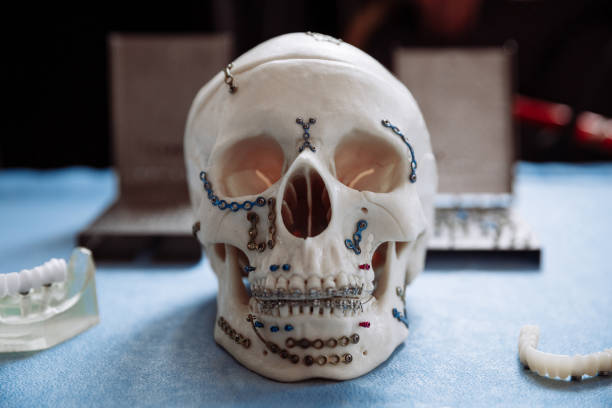The bones of the skull and face collectively make up the most complex area of skeletal real estate in the body. Analysis of the fractured face requires a knowledge of not only normal anatomy, but also of common fracture patterns in the face. Facial fractures are broken bones anywhere on the face. This includes the nose, cheekbones, the area around the eyes, and the upper and lower jaw.
Most of the time, they’re due to some kind of trauma to the face, like motor vehicle crashes, sporting injuries, falls, or fights.
What are the kinds of Facial Fractures?
- Nasal bones (broken nose): Nasal bone fractures are the most common type of facial fracture.
- Frontal bone (forehead) fractures: The frontal bone is the main bone in the forehead area. A high-impact injury to the head can cause a fracture of the frontal bone and floor of the sinuses.
- Zygomaticomaxillary fractures (broken cheekbone/upper jaw): This is the fracture that involves the Cheek bones and the bones surrounding it.
- Orbital rim fracture: The outer rim is the thickest part of the eye socket. It requires a lot of force to break the bone.
- Blowout fractures: The orbital rim remains intact in this case, but a crack forms in the thin bone at the lower part of the eye socket.
- Direct orbital floor fracture: This is a rim fracture that extends into the lower socket.
- Mid-face (Le Fort fractures): Blunt force trauma tends to cause fractures along three lines of weakness in the mid-face. Le Fort I, Le Fort II, Le Fort III.
- Mandible (lower jaw): This is the most common type of fracture involving the lower jaw of the patient.
Treatment of Facial Fractures:
The type of treatment will depend on the location and extent of the injury. The aim of treatment for facial fractures is to restore the normal appearance and function of the injured areas. Life-threatening conditions, such as blockage of the airways, cardiovascular problems, or brain or nervous system injuries, must be treated immediately.
This majorly involves a closed reduction of the fracture segment or open reduction. Closed Reduction: this type of treatment mainly involves no incisions, the surgeon manipulates the fracture segments and keeps them in position using movement restriction methods. in the case of Face using Intermaxillary Fixation.
Open Reduction: This method involves opening the fracture site using incisions in the mouth or the face and getting the fracture segments back in original position guided by occlusion (Teeth relation) or the original position guide using miniplates and screws.



